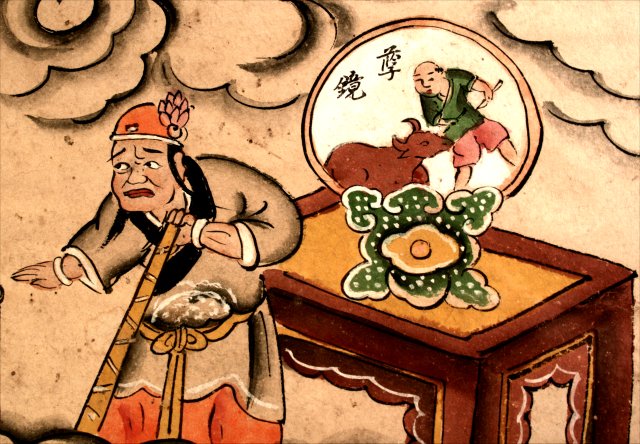
Translation
The evil-revealing mirror
Appearance in a Taiwanese visit to hell
For a description of the karma mirror from a Taiwanese spiritual medium who had engaged in a series of hell tours between 1976 and 1979, see Voyages to hell, Chapter 6.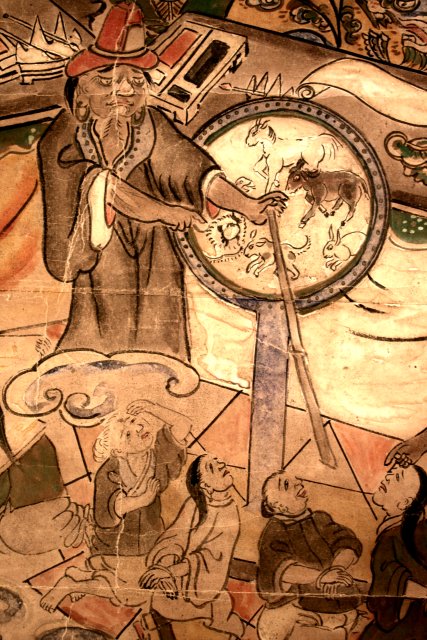
A second example of a karma mirror from another hell scroll (C5).
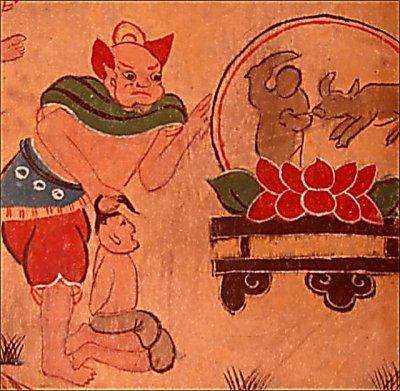
A third example of a karma mirror from another hell scroll (S3).
A large majority of these karma mirrors depict the mistreatment of a cow in particular. As these Chinese hells were originally influenced by their Buddhist and Hindu predecessors in India (exemplified by the fact that the most famous of the Chinese hell magistrates is Yama), perhaps mistreatment of cattle in particular is a holdover of Hindu beliefs. Early Hindu texts such as the Atharva-Veda and the Markandeya Purana indeed describe the hells that await people who mistreat cattle. Yet this is only a speculation.
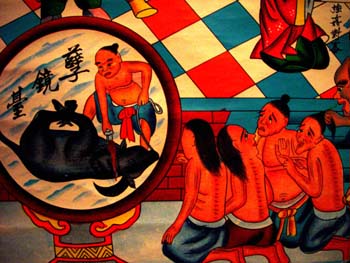
A fourth example from another hell scroll (B1).
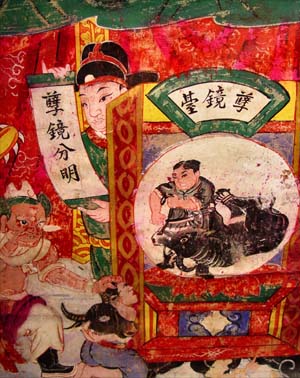
A fifth example from another hell scroll (S6).
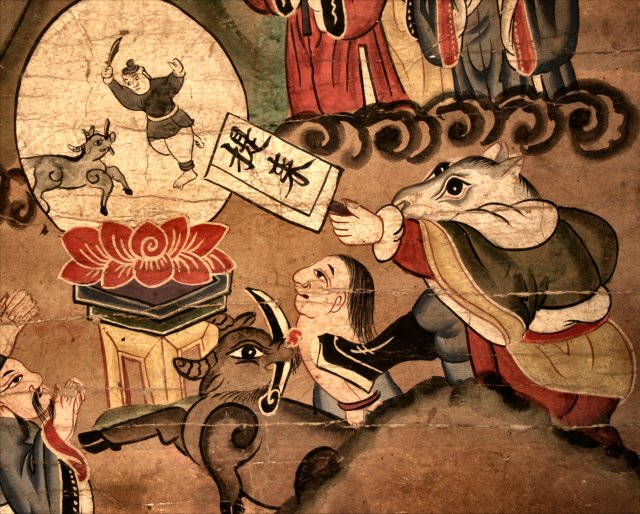
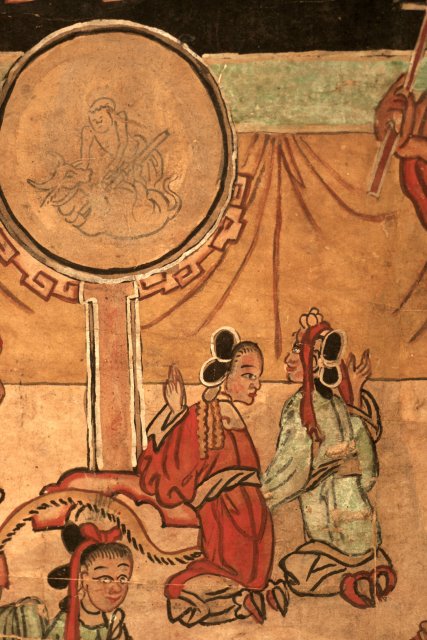
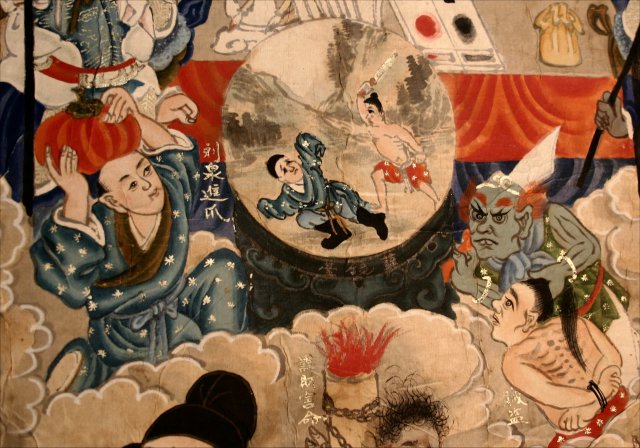
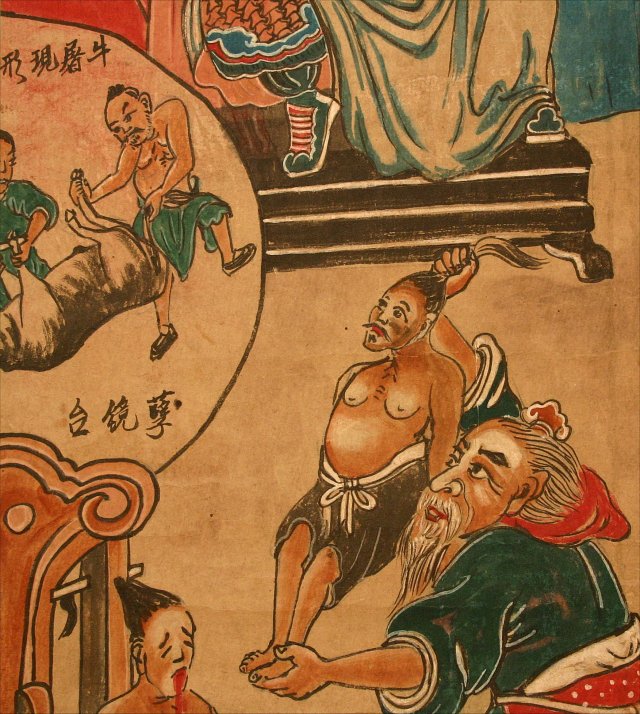
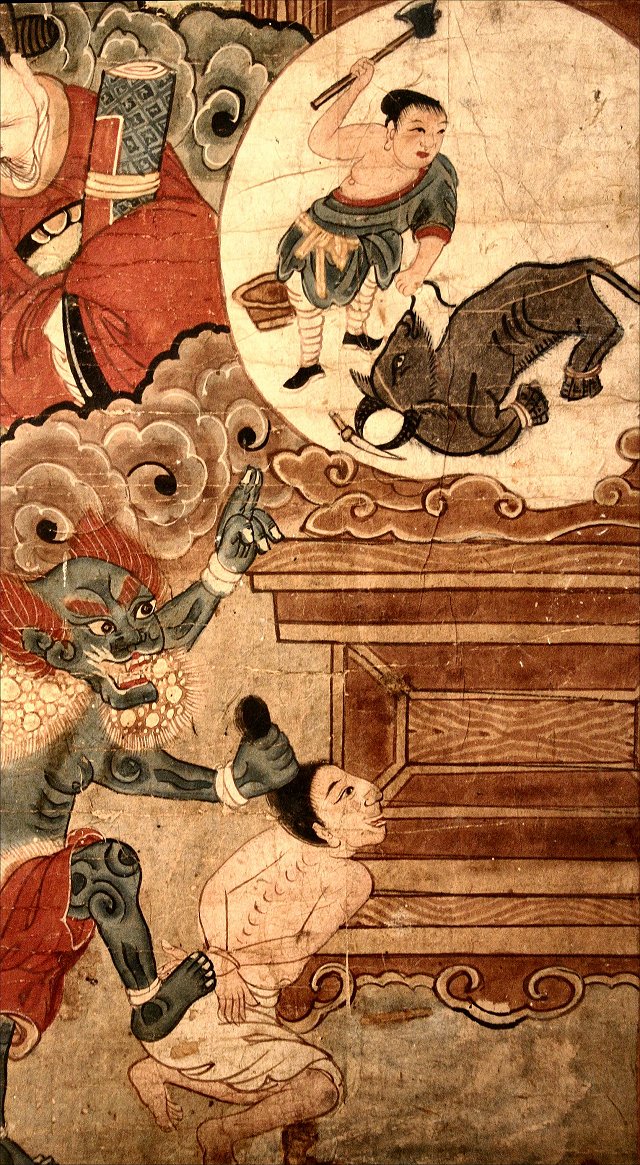
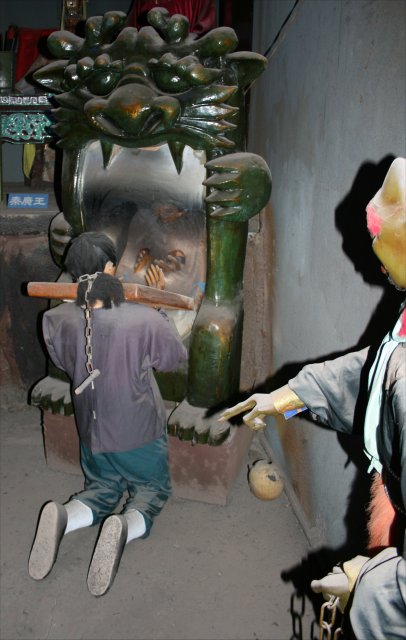
A (rather dusty) karma mirror as depicted at Fengdu, the City of Ghosts.